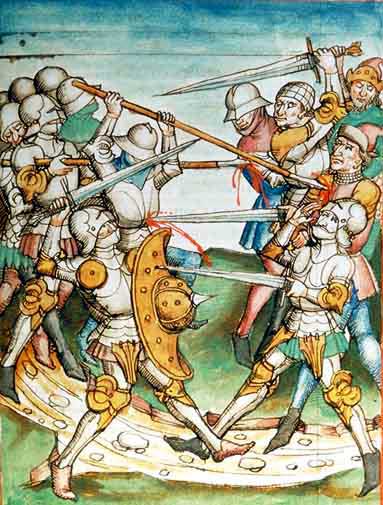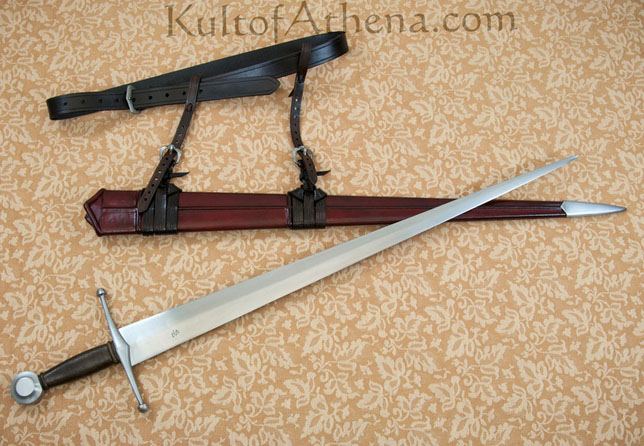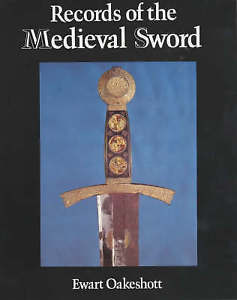Recent Articles
-
Real Katana Pushed to the limits
Mar 07, 25 01:16 AM
Oakeshott Type XV Swords
Type XV - Type 15
 Blade Length: 29-33"
Blade Length: 29-33"

COMMON POMMEL TYPES





COMMON GUARD TYPES
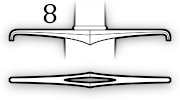
Armor Piercing Arming Sword: with either a diamond or hollow ground profile, Type XV swords were typically stiff, long and extremely pointed blades designed to pierce maille and the weak points/joints in plate armor. While any crossguard from the period could be used, type 8 (pictured) was the most common for a type 15 sword. In use from the 14th to the 15th centuries, but somewhat specialized in its use.
The Oakeshott Type XV sword was developed during the arms race raging during the 14th and 15th centuries.
While previously the swordman only had to content with maille, helmets and shields, more and more metal plates were being introduced until - by the time a sword like this was needed - plate armor was in full swing, making a knight close to invulnerable from normal cutting and cut and thrust orientated swords.
While this type of sword CAN cut, it discards the cut in favor of its specialty and primary use on the battlefield. And that use was to seek out, pry into and pierce in between the gaps of knights who were effectively like walking tanks. And so the relatively narrow blade is made with either a reinforced diamond cross section or hollow ground and tapers strongly to a long, dagger like needle pointed tip.
Replicas of Oakeshott Type XV Swords
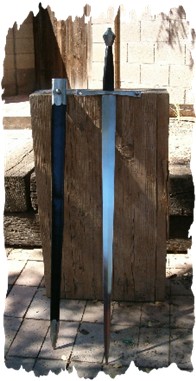
You would think that considering this type of sword was quite a common sight on the medieval battlefield for around 200 years, as well as the number of this type that are in museums, that there would be at least a few replicas of this sword type. But alas, that is not the case.
Del Tin of Italy used to make a couple of Type XVs around the $450 price point, and for a while there was a bargain priced replica of the now discontinued Shrewsbury Sword (pictured left) - but all have since left the market, suggesting that among modern day medieval sword collectors and enthusiasts, a sword specialized to tackle the problem of plate armor was just not something they were willing to fork over their money for..
Thankfully, for those few who do appreciate this unique style, there are some very nice high end replicas out there suitable for even the most demanding sword connoisseur.
It has a long wait time and does not come with a scabbard, but the Poitiers Sword by Albion is a perfect example of an Oakeshott type XV arming sword that would have appeared on the battlefield of Poitiers in 1356.
When you consider that this exceptional example of an XV includes a properly made leather scabbard, even though the price is higher, it is actually still very competitive with Albion's offering above and well worth a look for anyone seeking 'the complete package' so to speak.
Further Resources
MyArmory has an excellent in depth article on Type XV swords here which explains their history and lists some high end reproductions and images of actual antiques.
And of course, you can - and should - read more about these swords and all the others in the Oakeshott Typology in his book, Records of the Medieval Sword
I hope this information on the Oakeshott Type XV sword has been helpful. To return to Oakeshott Typology Made Easy from Oakeshott Type XV Swords, click here


